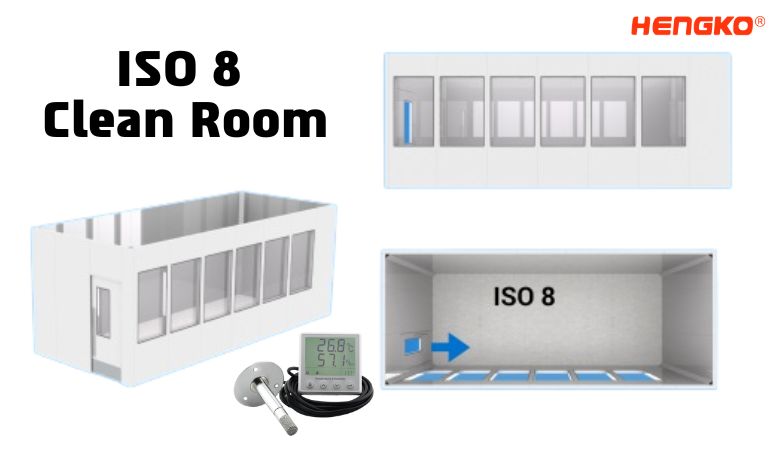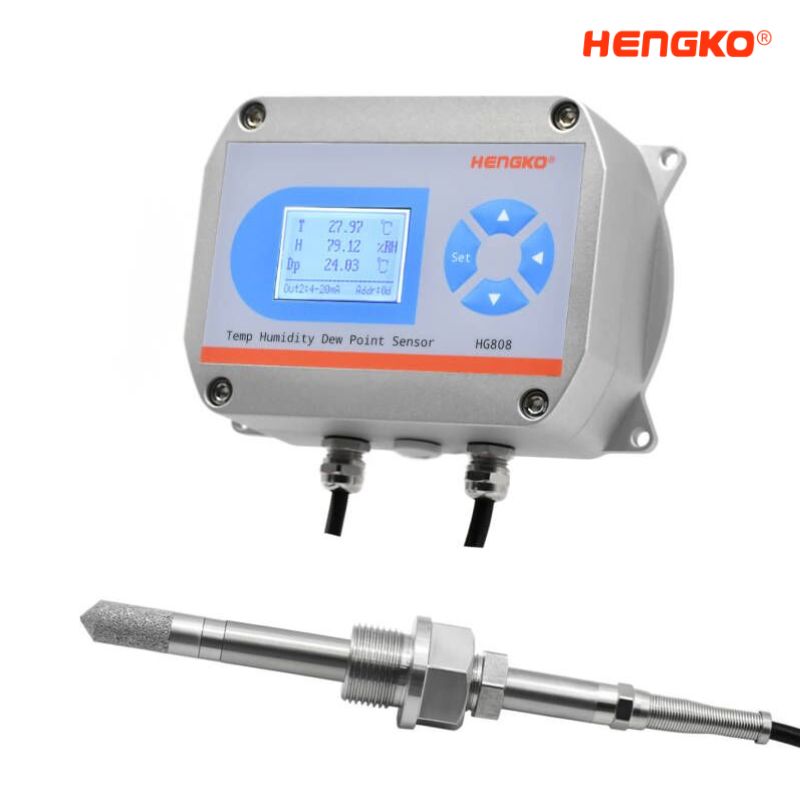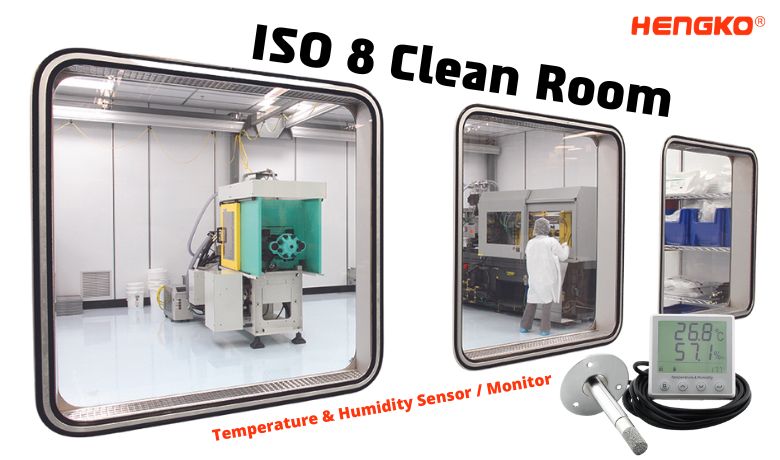
Introduction to Clean Rooms
A clean room is a controlled environment designed to minimize the presence of airborne particles, aerosol particles, and other contaminants. These specialized spaces are essential in various industries, including pharmaceutical manufacturing, medical device manufacturing, and electronics manufacturing, where stringent control of environmental parameters such as temperature, humidity, and air pressure is crucial. High-Efficiency Particulate Air (HEPA) filters play a vital role in removing particles from the air, ensuring that the environment remains as clean as possible. Additionally, the final filtration of air occurs at the point where it enters the cleanroom, and achieving a minimum of 20 air changes per hour is essential to meet cleanliness standards. Air changes per hour (ACH) are meticulously regulated to prevent contamination and maintain the integrity of the clean room.
Clean rooms are classified based on their level of cleanliness, with ISO 8 being the second lowest cleanroom classification. Despite this, ISO 8 clean rooms are still significantly cleaner than typical office environments, making them suitable for various industries that require a controlled environment to prevent contamination and ensure product quality. Selecting the appropriate cleanroom classification is crucial and depends on factors like process requirements and air quality. The use of HEPA filters, along with precise control of air changes, helps maintain the required cleanliness levels, making clean rooms indispensable in industries where even the smallest particles can compromise product integrity.
Clean Room Design and Layout
Clean room design and layout are crucial in maintaining a controlled environment, free from contaminants and airborne particles. The layout of a clean room is meticulously planned to minimize the risk of contamination and ensure the quality of products. In this section, we will discuss the design and layout of different types of ISO 8 clean rooms, including pharmaceutical, electronics, aerospace, and food and beverage clean rooms.
Types of Types of ISO 8 Clean Room
ISO 8 clean rooms are utilized across a wide range of industries, including pharmaceutical manufacturing, electronics manufacturing, and aerospace manufacturing. These clean rooms are meticulously designed to meet specific temperature and humidity requirements, ensuring that the environment remains controlled and free from contaminants. Equipped with HEPA filtration systems and air conditioning systems, ISO 8 clean rooms maintain the necessary environmental conditions to support various manufacturing processes. Cleanroom environmental monitoring systems play a crucial role in collecting, analyzing, and reporting on cleanroom data to ensure compliance with regulatory standards.
In pharmaceutical manufacturing, for instance, maintaining precise temperature and humidity levels is crucial to prevent contamination and ensure the quality of the products. Similarly, in electronics manufacturing, controlling these environmental parameters helps prevent damage to sensitive components. The use of advanced air conditioning and humidity control systems in ISO 8 clean rooms ensures that the environment remains stable, supporting the stringent requirements of various industries. Additionally, the use of mixed air flow patterns in ISO 8 clean rooms is essential for maintaining effective air changes and particle control, particularly when combined with low wall air returns.
1. Pharmaceutical ISO 8 Clean Rooms:
Pharmaceutical ISO 8 clean rooms are designed to meet the stringent requirements of the pharmaceutical industry. These clean rooms are equipped with high-efficiency particulate air (HEPA) filters, humidity control systems, and temperature control systems to maintain a stable environment. The layout of a pharmaceutical clean room is strategically designed to prevent contamination and ensure the quality of products.
Pharmaceutical manufacturing cleanrooms require a high level of air cleanliness, with a maximum particle count of 3,520,000 particles ≥ 0.5 microns per cubic meter of air. The temperature and humidity requirements for pharmaceutical clean rooms are typically between 20-25°C and 30-50% relative humidity. These parameters are critical to prevent microbial growth and ensure the integrity of pharmaceutical products. The use of advanced humidity control systems and precise temperature control helps maintain these conditions, ensuring that the clean room environment remains within the specified range.
In addition to environmental controls, the layout of pharmaceutical ISO 8 clean rooms often includes designated areas for gowning, material transfer, and product storage. These areas are designed to minimize the movement of personnel and materials, reducing the potential for contamination. By implementing these design principles, pharmaceutical clean rooms can maintain the highest standards of cleanliness and product quality.
2. Electronics ISO 8 Clean Rooms:
These are utilized in the manufacturing of electronic components such as semiconductors and microchips. The clean rooms prevent contamination that could affect the performance and reliability of the electronic devices. Measurement sensors are used in electronics ISO 8 clean rooms to monitor critical factors such as temperature, humidity, and particle count.
3. Aerospace ISO 8 Clean Rooms:
These are used in the manufacturing and assembling of aerospace components. Contamination control is crucial in this industry as even a small amount of particulate or microbial contamination can lead to failures in aerospace components. To prevent such contamination, aerospace ISO 8 clean rooms utilize a specialized filter system that circulates outside air through HEPA or ULPA filters, ensuring the required cleanliness level is maintained.
4. Food and Beverage ISO 8 Clean Rooms:
These clean rooms are used in the production and packaging of food and beverage products, where maintaining a contamination-free environment is crucial to ensure product safety and quality. The use of low wall air returns in these ISO 8 clean rooms is essential for achieving adequate air circulation and filtration efficiency, which helps in maintaining the specific regulatory standards and environmental parameters required for such applications.
A gowning room is essential in minimizing particle contamination when transitioning from less controlled environments to cleaner spaces, thereby maintaining air quality and meeting specific ISO standards.
5. Medical Device ISO 8 Clean Rooms:
These are used in the manufacturing and packaging of medical devices. They ensure that the devices are free from contamination and safe for use in medical procedures. Instant environmental data access is crucial in medical device ISO 8 clean rooms for maintaining compliance and ensuring product quality.
6. Research and Development ISO 8 Clean Rooms:
These are used in scientific research where a controlled environment is required to conduct experiments and tests accurately. Each of these clean rooms must comply with the ISO 8 cleanliness standards, which include specific requirements for air cleanliness, particulate counts, temperature, and humidity. The design and operation of these clean rooms will vary depending on the specific needs of the industry and application. A web-based interface accessible from any internet-enabled device allows for real-time data access and sophisticated analysis, providing crucial alarm notifications, reports, and documentation needed for regulatory compliance in these environments.

Understanding the Essentials of ISO 14644-1 Classification
and Requirements for ISO 8 Clean Rooms in Various Industries
ISO 14644-1 classification clean room is a room or enclosed environment in which it is essential to keep the particle count low. These particles are dust, airborne microorganisms, aerosol particles, and chemical vapors. In addition to particle count, a clean room can usually control many other parameters, such as pressure, temperature, humidity, gas concentration, etc. ISO 8 cleanrooms adhere to specific standards and regulatory requirements related to cleanliness and particle counts, ensuring compliance with industry norms.
ISO 14644-1 Clean room are classified from ISO 1 to ISO 9. Each clean room class represents the maximum particle concentration per cubic meter or cubic foot of air. A clean room is a contained environment where maintaining low particle counts is imperative. ISO 8 is the second lowest clean room classification. Designing clean rooms requires consideration of additional regulatory standards and requirements depending on the industry and application. However, for ISO 8 clean rooms, there are several general requirements and environmental parameters to consider. For ISO 8 clean rooms, these include HEPA filtration, air changes per hour (ACH), air pressure, temperature and humidity, number of people working in the space, static controls, lighting, noise levels, etc. The concept of final filtration is significant in the air quality control process. The importance of the HEPA filtration system in maintaining the cleanliness of ISO 8 clean rooms cannot be overstated. Collecting and analyzing detailed cleanroom environmental data is crucial to assess contamination risks and ensure compliance with regulatory standards.
Clean rooms are available for a wide variety of industries and applications. Some of the most common ISO 8 clean rooms include medical device manufacturing, pharmaceutical manufacturing, compounding, semiconductor manufacturing, electronics manufacturing, etc.
Clean rooms typically have environmental monitoring systems that can collect, analyze, and notify detailed clean room environmental data. Especially for manufacturing Spaces, cleanroom monitoring aims to assess the potential contamination risk of products and maintain compliance with regulatory standards. The system can collect real-time data from HENGKO indoor clean room temperature and humidity sensors. HENGKO temperature and humidity transmitter can effectively and accurately measure the temperature and humidity numerical in a clean room, providing accurate and reliable data for the system. Help the manager to effectively monitor the indoor temperature and humidity environment to ensure that the clean room is in reasonable and appropriate environmental conditions.
Some people may ask, what is the difference between ISO 7 and ISO 8? The two main differences between ISO 7 and ISO 8 clean rooms are particle counting and ACH requirements, which make them stand out for different applications. An ISO 7 clean room must have 352,000 particles ≥ 0.5 microns/m3 and 60 ACH/hour, while ISO 8 is 3,520,000 particles and 20 ACH.
In conclusion, clean rooms are essential for spaces where cleanliness and sterility are critical, and ISO 8 clean rooms are typically 5-10 times cleaner than a typical office environment. Specifically, in medical device and pharmaceutical manufacturing, clean rooms, product safety, and quality are crucial. If too many particles enter the space, raw materials, manufacturing processes, and finished products will be affected. Therefore, clean rooms are essential in some industrial manufacturing areas that require precision machining.

Temperature Control in ISO 8 Clean Rooms
Temperature control is a critical aspect of maintaining a clean and controlled environment in ISO 8 clean rooms. The ideal temperature range for an ISO 8 clean room is between 19-23 degrees Celsius (66-73 degrees Fahrenheit), with a setpoint around 20-21 degrees Celsius (68-70 degrees Fahrenheit). ISO 8 cleanroom classification and standards emphasize particle count requirements as outlined by US Federal Standard 209E and ISO 14644-1, highlighting the significance of maintaining low particle counts in environments such as pharmaceutical and medical device manufacturing. Temperature fluctuations can cause employees to shiver or sweat, leading to more particles being released into the cleanroom, which can compromise the quality of products and increase the potential contamination risk.
To maintain a stable temperature, temperature control systems such as air conditioning and heating systems are employed. These systems work in conjunction with high-efficiency particulate air (HEPA) filters and air pressure control systems to ensure a controlled environment. HEPA filters are particularly crucial as they help remove airborne particles that could otherwise contaminate the clean room. It is also important to set humidity alarm delays to accommodate fluctuations during normal operation such as cleaning or opening doors.
In addition to preventing contamination, temperature control is essential for preventing microbial growth. This is particularly important in pharmaceutical manufacturing and medical device manufacturing, where maintaining the integrity and sterility of products is paramount. By ensuring the clean room remains within the ideal temperature range, manufacturers can prevent contamination and ensure the quality and safety of their products.
Humidity Control in ISO 8 Clean Rooms
Humidity control is another essential aspect of maintaining a clean and controlled environment in ISO 8 clean rooms. The relative humidity (RH) in an ISO 8 clean room should be maintained between 30-60%, with a setpoint around 40-50%. Humidity control systems, such as humidifiers and dehumidifiers, are used to maintain a stable RH level and prevent contamination. Additionally, the manufacturing of softwall cleanrooms, which comply with ISO classifications and standards, is crucial for catering to different cleaning requirements and maintaining controlled environments.
High humidity levels can lead to microbial growth, which poses a significant risk to product quality and safety. Conversely, low humidity can cause static electricity, which can damage sensitive equipment and products. Therefore, maintaining an optimal humidity level is crucial for preventing contamination and ensuring the quality of products. Meeting regulatory requirements for humidity control is essential to prevent contamination and ensure product quality.
Humidity control is particularly important in industries such as pharmaceutical manufacturing, medical device manufacturing, and the production of food and beverage products. In these industries, maintaining a controlled environment is essential to prevent contamination and ensure product safety. Additionally, proper humidity control helps maintain a comfortable working environment and prevents the growth of airborne microbes and aerosol particles.
By implementing effective humidity control systems, manufacturers can ensure that their ISO 8 clean rooms remain within the required humidity range, thereby preventing contamination and ensuring the quality and safety of their products.
FAQ :
1. What is ISO 8 Classification and How Does it Affect Clean Rooms?
ISO 8 Classification is part of the ISO 14644-1 standards, which dictate the cleanliness and particulate counts required for controlled environments such as clean rooms. For a clean room to meet ISO 8 standards, it must have a maximum allowable particle count per cubic meter, with specific limits set for particles of different sizes. This classification is essential in industries such as pharmaceuticals, aerospace, and electronics, where even small amounts of contamination can have significant impacts on product quality and safety.
2. Why is Clean Room Monitoring Important for Maintaining ISO 8 Standards?
Clean room monitoring is a critical aspect of maintaining ISO 8 standards because it ensures that the clean room environment consistently meets the required cleanliness levels. This involves continuous measurement and control of factors such as temperature, humidity, and particulate contamination. Clean room monitoring is essential to prevent contamination and maintain product quality, ultimately protecting both consumers and manufacturers.
3. What are the Key Requirements for an ISO 8 Clean Room?
The key requirements for an ISO 8 clean room include specific limits on air cleanliness and particle counts, as well as requirements for temperature and humidity control. These requirements are outlined in the ISO 14644-1 standard and must be strictly adhered to in order to maintain the ISO 8 classification. Proper clean room design, ventilation, and regular maintenance are also critical to meet these requirements.
4. How Do ISO 8 Clean Room Particle Counts Affect Product Quality?
ISO 8 clean room particle counts are a crucial factor in determining product quality, especially in industries where even small amounts of contamination can have significant impacts. A high particle count can result in product defects, recalls, and damage to a company's reputation. Regular monitoring and control of particle counts are essential to prevent contamination and ensure product quality.
5. What Are the Specific Temperature and Humidity Requirements for ISO 8 Clean Rooms?
While the ISO 14644-1 standard does not specify exact temperature and humidity requirements for ISO 8 clean rooms, these factors must be carefully controlled to maintain the required cleanliness levels. Temperature and humidity can affect the behavior of particles in the air and influence the risk of contamination. The specific requirements will vary depending on the industry and application.
6. How Does an Environmental Monitoring System Contribute to Maintaining ISO 8 Clean Room Standards?
An environmental monitoring system plays a critical role in maintaining ISO 8 clean room standards by continuously measuring and recording cleanliness and environmental conditions. This system helps ensure compliance with relevant standards and regulations, provides valuable data for quality control, and supports continuous improvement of the clean room environment.
So if you also have ISO 8 Clean Room .it's better to install the temperature and humidity sensor or monitor to check the data, to Ensure your project is goes fine as your plan.
Have Any questions for the industry temperature and humidity sensor, like how to choose right industry humidity sensor ect, you are welcome to contact us by email ka@hengko.com
we will send back to you within 24-Hours.
Send your message to us:
Post time: Feb-24-2022





